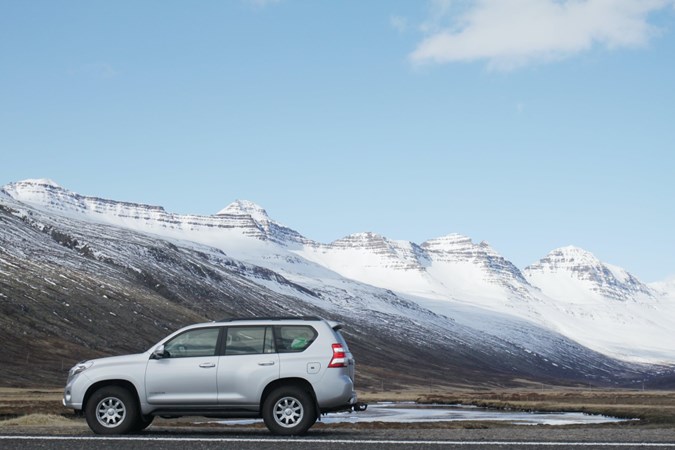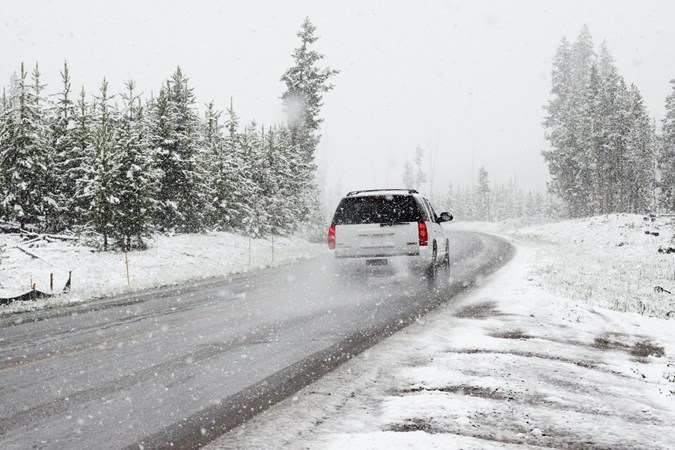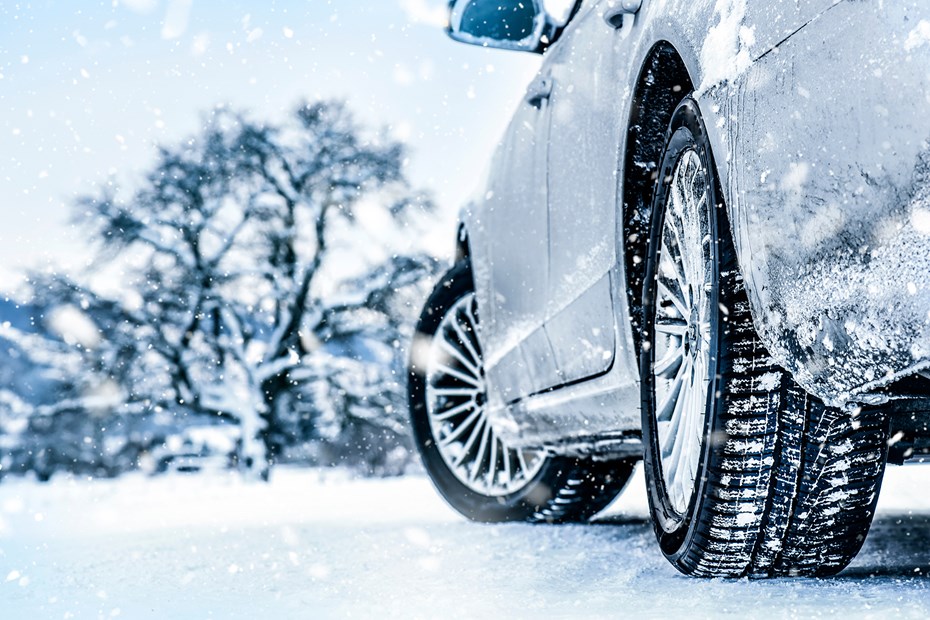Winter driving brings its own set of challenges — rain, ice, fog, snow, and long, dark nights. While plenty of driving products make driving easier in bad weather conditions, many people forget about the most important thing — your tyres. Standard tyres don’t cut it on wet, icy roads, as the grip is reduced, and braking distance gets longer. Switching to winter tyres gives you better traction and control in these conditions, keeping you safer behind the wheel when the weather turns.
Seasonal use of winter tyres is legally required in most of Europe during the colder months, particularly in mountainous areas. The UK government takes a more laissez-faire approach. Winter tyres aren’t required by law here at any time of year, or in any specific area.
But, to keep yourself safe on the road, we think they’re a good idea. Indeed, it’s arguably more important to have quality tyres fitted to your car during winter than at any other time.
In this guide, we’ll explore how winter tyres differ from regular tyres, when you should have them fitted and whether they’re really worth it.
How do winter tyres work?
Heat is crucial to a tyre’s performance. It builds up as you drive along and contributes to the tyre’s ability to grip the road. A winter tyre has a higher silica content in the rubber than summer tyres, allowing it to retain more heat, stay pliable and provide grip at lower temperatures. Summer tyres tend to go hard in low temperatures, which makes them less grippy.
As a result, it’s wise to fit winter tyres as soon as the outside temperature drops into single digits to ensure you get maximum grip on the road surface.
Winter tyres also have up to 10 times more ‘sipes’ – tiny grooves in the tyre tread – that let the tread move around and generate more heat, improving grip.

Larger gaps in the tread also pick up snow. It may seem odd, but snow grips onto snow a lot better than rubber does, giving improved traction over frozen surfaces and better adhesion in corners. Once back on Tarmac, the heat generated by the tread soon melts any remaining snow.
Is it worth putting winter tyres on?
In one word, yes, because winter tyres provide a lot more grip in cold conditions than summer tyres do. That means there’s greater traction when accelerating, more grip in corners and shorter stopping distances.
Some drivers keep a set of wheels with winter tyres on them, which makes it easier to swap between summer and winter rubber. You do need somewhere to store the out-of-season wheels, but plenty of car dealers and garages offer that service – for a fee.
To illustrate the difference in performance between summer winter tyres, we tested a pair of Volvos on a low-friction skid plate at Silverstone. The results speak for themselves:
Video: summer tyres:
Video: winter tyres:
But you can’t rely solely on tyres to keep you safe on the road in winter. There are all sorts of winter driving tips for little things you can do to your car and changes you make your driving style that will help.
Can you use winter tyres all year round?
Winter tyres aren’t really built for all-year use. In warmer, dry conditions, they don’t grip as well and can overheat at higher speeds since their rubber is designed to generate heat at lower temperatures.
A better option for year-round use, especially in the UK’s mixed climate, is all-season tyres. These offer a compromise between summer and winter tyres, with tread patterns and rubber compounds that can handle a range of temperatures and weather conditions. While they won’t match summer tyres for grip in the heat or winter tyres in snow and ice, they’re a convenient solution if you don’t want the hassle of swapping tyres every season.
There’s nothing stopping you from using winter tyres year-round, but they’re not ideal. Expect higher fuel consumption due to increased rolling resistance, quicker wear, and less grip in corners during warm weather. You might also find the ride a little less comfortable.
For more details on choosing the right tyres, check out our full tyre advice guide.
Should I buy winter tyres, or is there an alternative?
There are some different solutions to fitting a whole set of winter tyres (never fit half a set). None are suitable for permanent use but do have their uses.

Snow socks slip over a car’s wheels and provide extra grip on slippery surfaces. But they only work on snow, the fabric they’re made from tearing to pieces on Tarmac.
Snow chains work really well on deep snow, but also don’t work at all on Tarmac. Indeed, they can damage the road surface and even your car without snow under the wheels. They’re horrendously noisy, too.
Both socks and chains require a thorough wash after use, as they’ll deteriorate due to the salt used to de-ice our highways.
If you live somewhere that gets relatively mild winters, it can be viable to keep using your car’s existing summer or all-season tyres. But check your tyres thoroughly to make sure they’re in good condition. Pay particular attention to the amount of tyre tread – low tread can make winter driving even more hazardous.
FAQs
-
How do winter tyres affect fuel consumption?
Unfortunately, winter tyres can slightly increase fuel consumption, because they have more rolling resistance compared to summer tyres. However, this increase is typically minor and offset by the safety and performance benefits you'll receive in cold weather conditions.
-
How long do winter tyres last?
Typically winter tyres will last around three to four seasons, but this is dependent on your driving habits and how well you store them when not in use. It is important that you check their tread depth and replace them once they reach the legal limit or wear out.
-
Do I need to put winter tyres on all four wheels?
Yes, it is crucial to install winter tyres on all four wheels. Mixing tyres can lead to inconsistencies in the grip, which can make handling unpredictable, especially in wet or icy conditions.
Looking for more jargon-busting motoring meanings? Head over to our Parkers Car Glossary page and take a look at our other definitions
Just so you know, we may receive a commission or other compensation from the links on this website - read why you should trust us.








